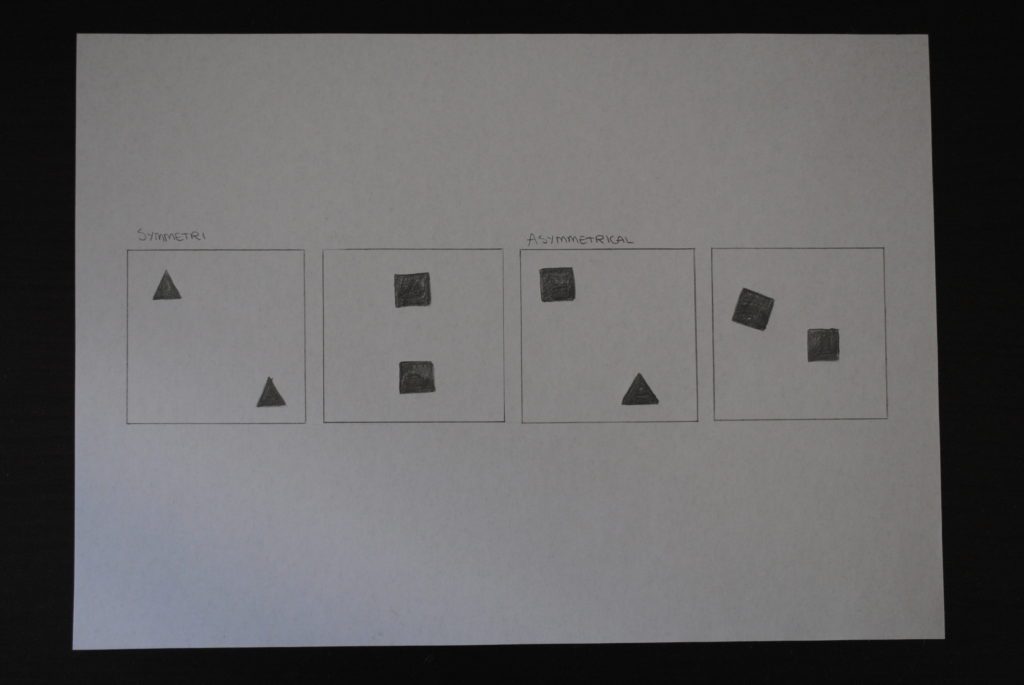Brief:
This task will allow you to test your idea sketching skills. It is important to start working with basic ideas on paper and develop your concept from there on out.
- On an A4 landscape page, draw four equal squares. Create four more pages in this way. So, you’ll have five pages with four squares on each.
- Draw one or two squares or rectangles in each empty square to achieve the visual effects that you see on the first page of Module 3 in your Graphic Design School textbook. You can work with the interaction of rectangles and squares to make the balance or imbalance more evident.
- Entering left
- Movement to the right
- Movement to the left
- Movement downwards
- Movement upwards
- Balance
- Tension
- Symmetry/asymmetry
Produce at least two different versions of each effect, recording your results each time. Explain in one or two sentences what you wanted to achieve (as shown in your manual).

Symmetry:
1: The two triangles are placed in the same space on two opposite squares within the square, creating the same on each side
2: the squares are horizontally in the same space within the square on opposite sides of the “line”
Asymmetry:
2:The square is further to the left of the middle of the imagined square within the space, whilst the triangle is in the middle of its “square”, creating asymmetry.
2: One of the squares is tilting whilst the other is not, also it is off the center of the other square. They are also different sizes.

Entering left:
1:The square is coming in from the side, with a little room for air, giving the illusion of just entering.
2: The two squares are coming into the space, one not fully inside yet. They are the same size and on the same line so they seem connected.
Movement Left:
1:The two squares are equal and close enough to appear connected and are moving from middle to left, by not being centered in the space.
3: The square is on the left side, not symmetrically so, just a little off the middle, giving illusion of moving left.

Balance:
1: The box itself can be imagined to be 4 squares, as such, placing the two squares dead center in opposite squares makes it balanced.
2: The two squares are on the same line and with equal air between them and to the sides, being in balance
Tension:
1: The triangle and square are almost touching and in a corner with much air left in the space. This makes us feel something is wrong and creates tension.
2: The two squares are not on a line, and not centered in any way within the space, creating tension.

Movement Right:
1: The two triangles are further to the right within the space and closer to the middle then to the edge, so it makes them appear to be moving right.
2: The arrow is on the right-hand side of the space, and creating an arrow makes it look rightward bound.
Entering right:
1: The triangle is just entering the space on the right-hand side showing it just showed up.
2: The square is closer to the edge than to the middle appearing to go towards the middle.

Movement upwards:
1: The two triangles are the same size and both look like arrows, they are on a line and appear to be moving together up.
2: The square is almost out of the space and on its way out.
Movement down:
1: The square is a little off-center, in the bottom half of the space, and looks like it is going down.
2: The two triangles are acting as a unit by being the same size and on the same line, and they are below the middle of space. In addition, they are upside down, looking like an arrow.

